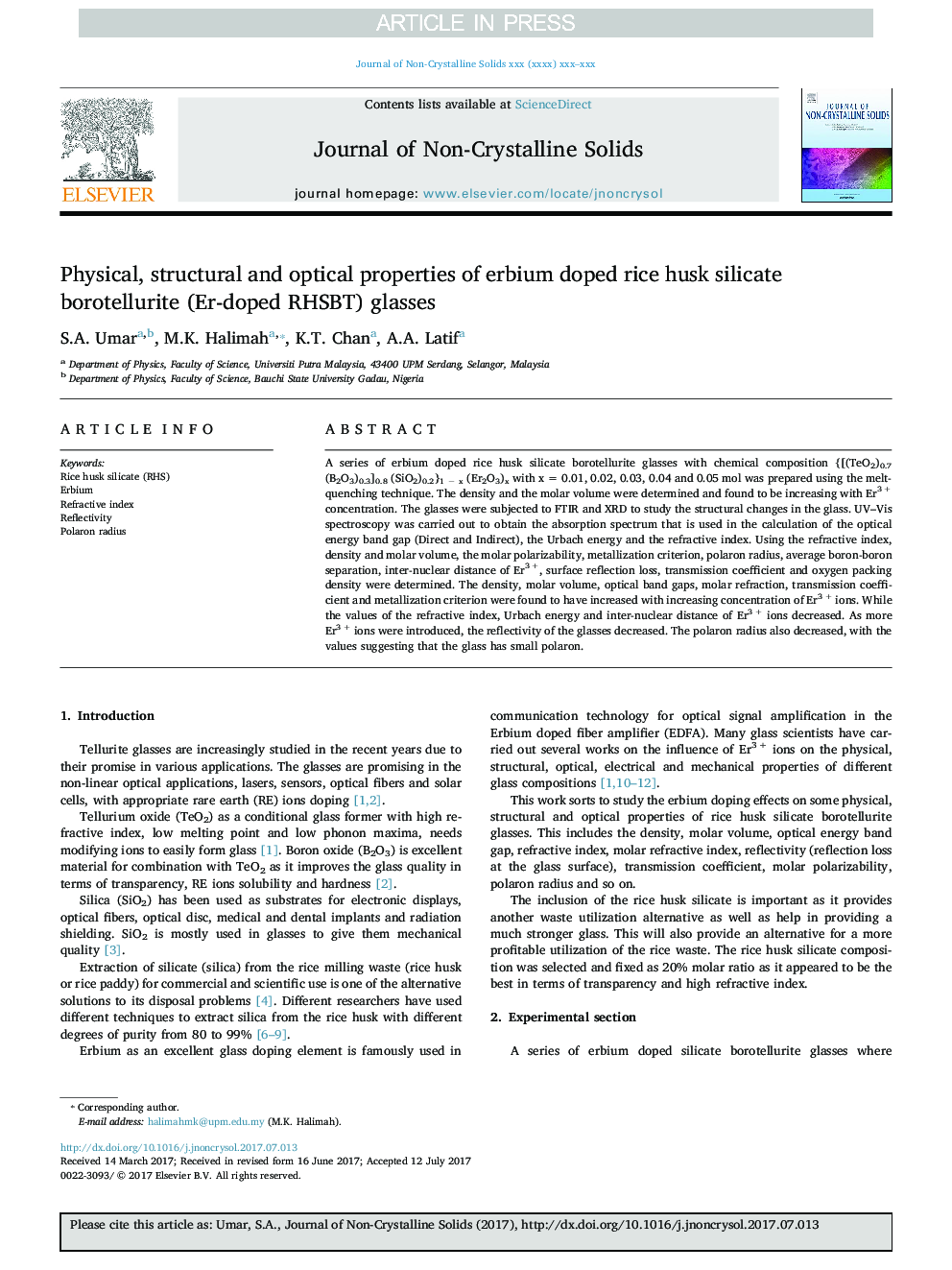| Article ID | Journal | Published Year | Pages | File Type |
|---|---|---|---|---|
| 5441131 | Journal of Non-Crystalline Solids | 2017 | 8 Pages |
Abstract
A series of erbium doped rice husk silicate borotellurite glasses with chemical composition {[(TeO2)0.7 (B2O3)0.3]0.8 (SiO2)0.2}1 â x (Er2O3)x with x = 0.01, 0.02, 0.03, 0.04 and 0.05 mol was prepared using the melt-quenching technique. The density and the molar volume were determined and found to be increasing with Er3 + concentration. The glasses were subjected to FTIR and XRD to study the structural changes in the glass. UV-Vis spectroscopy was carried out to obtain the absorption spectrum that is used in the calculation of the optical energy band gap (Direct and Indirect), the Urbach energy and the refractive index. Using the refractive index, density and molar volume, the molar polarizability, metallization criterion, polaron radius, average boronâboron separation, inter-nuclear distance of Er3 +, surface reflection loss, transmission coefficient and oxygen packing density were determined. The density, molar volume, optical band gaps, molar refraction, transmission coefficient and metallization criterion were found to have increased with increasing concentration of Er3 + ions. While the values of the refractive index, Urbach energy and inter-nuclear distance of Er3 + ions decreased. As more Er3 + ions were introduced, the reflectivity of the glasses decreased. The polaron radius also decreased, with the values suggesting that the glass has small polaron.
Keywords
Related Topics
Physical Sciences and Engineering
Materials Science
Ceramics and Composites
Authors
S.A. Umar, M.K. Halimah, K.T. Chan, A.A. Latif,
